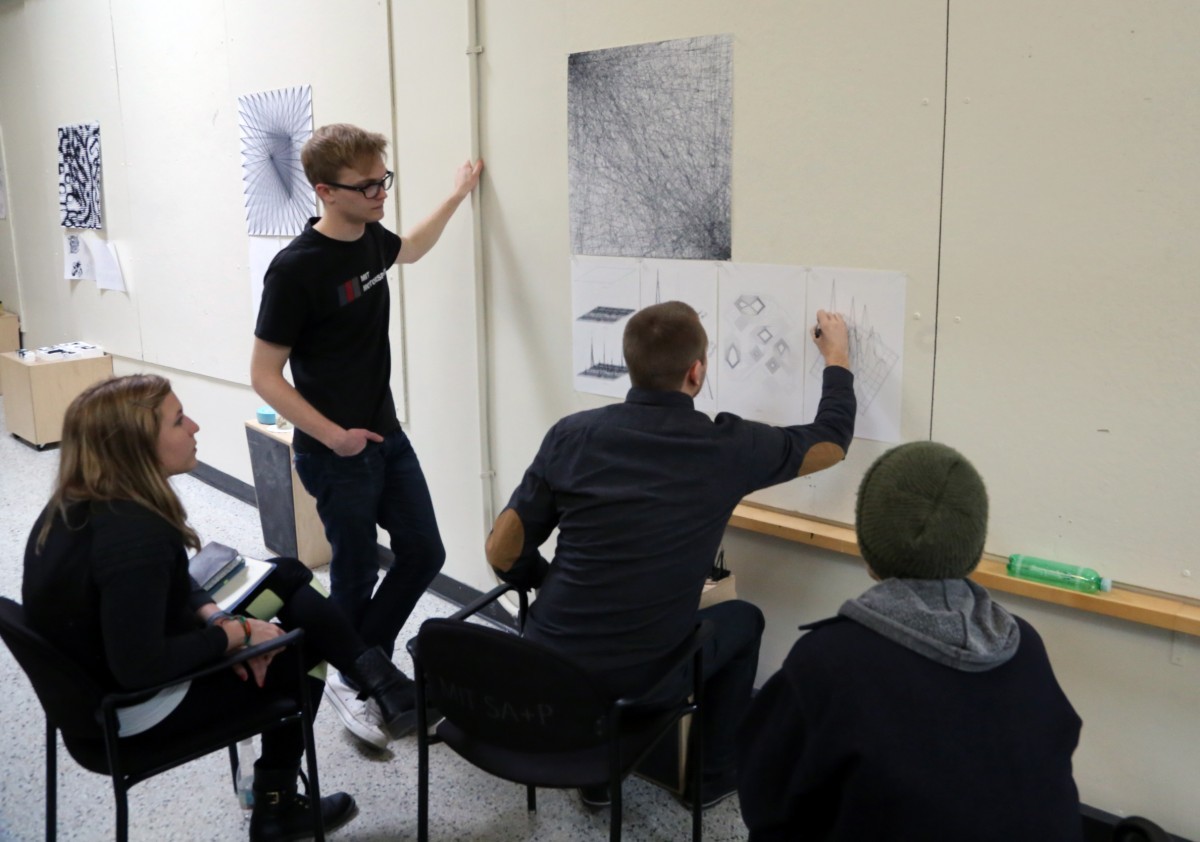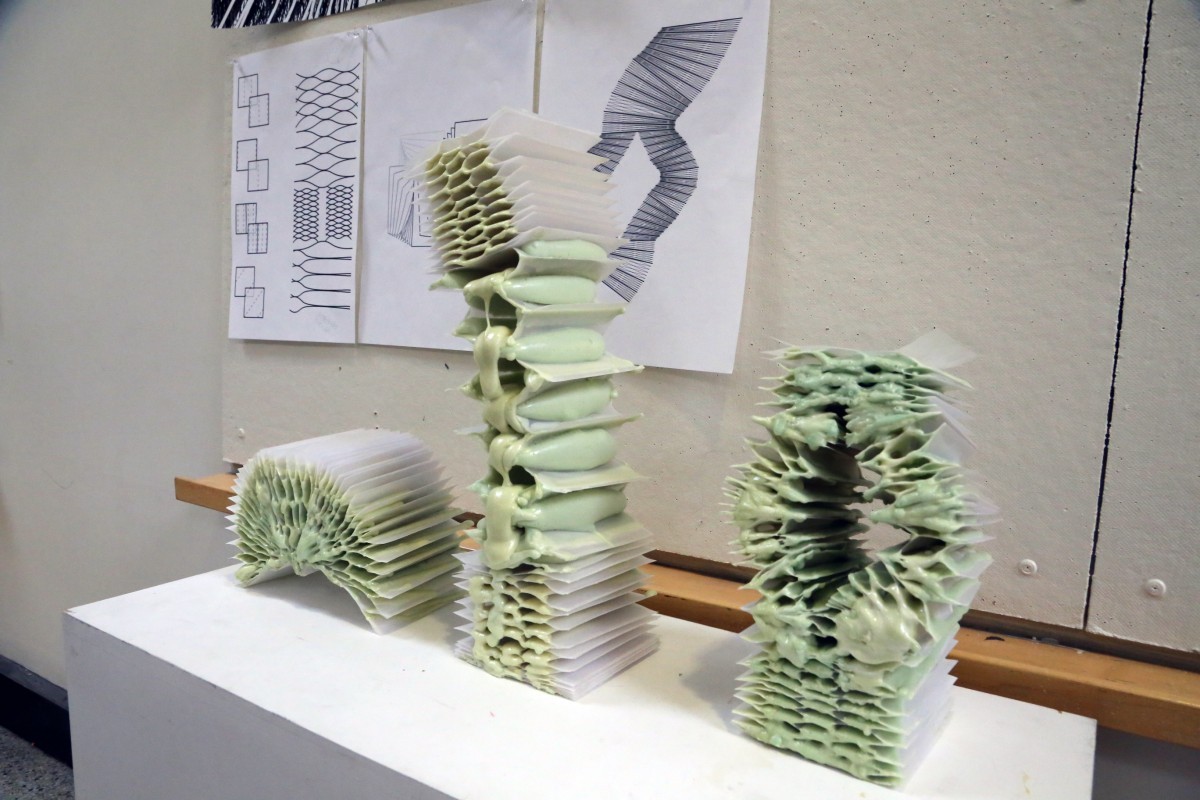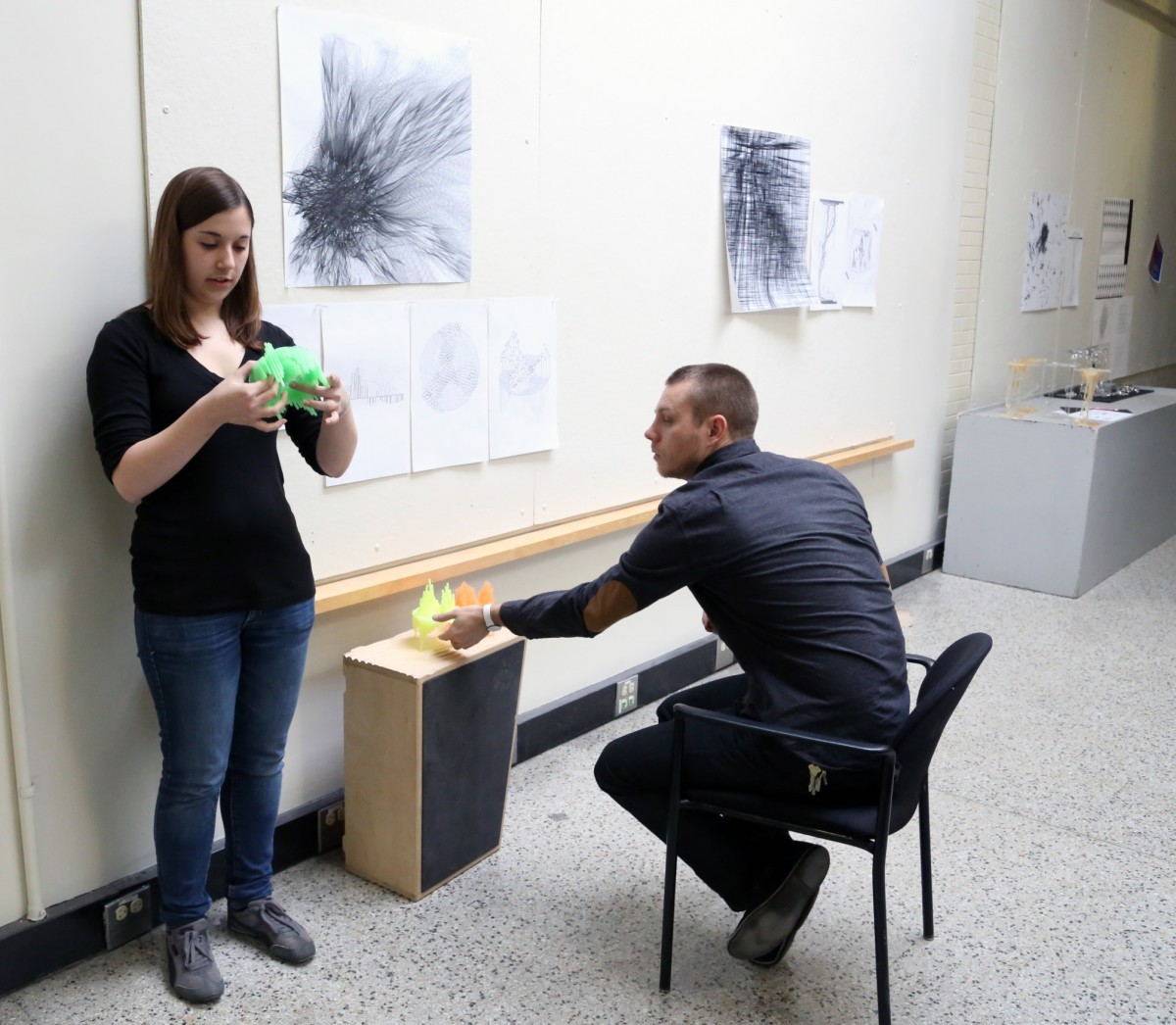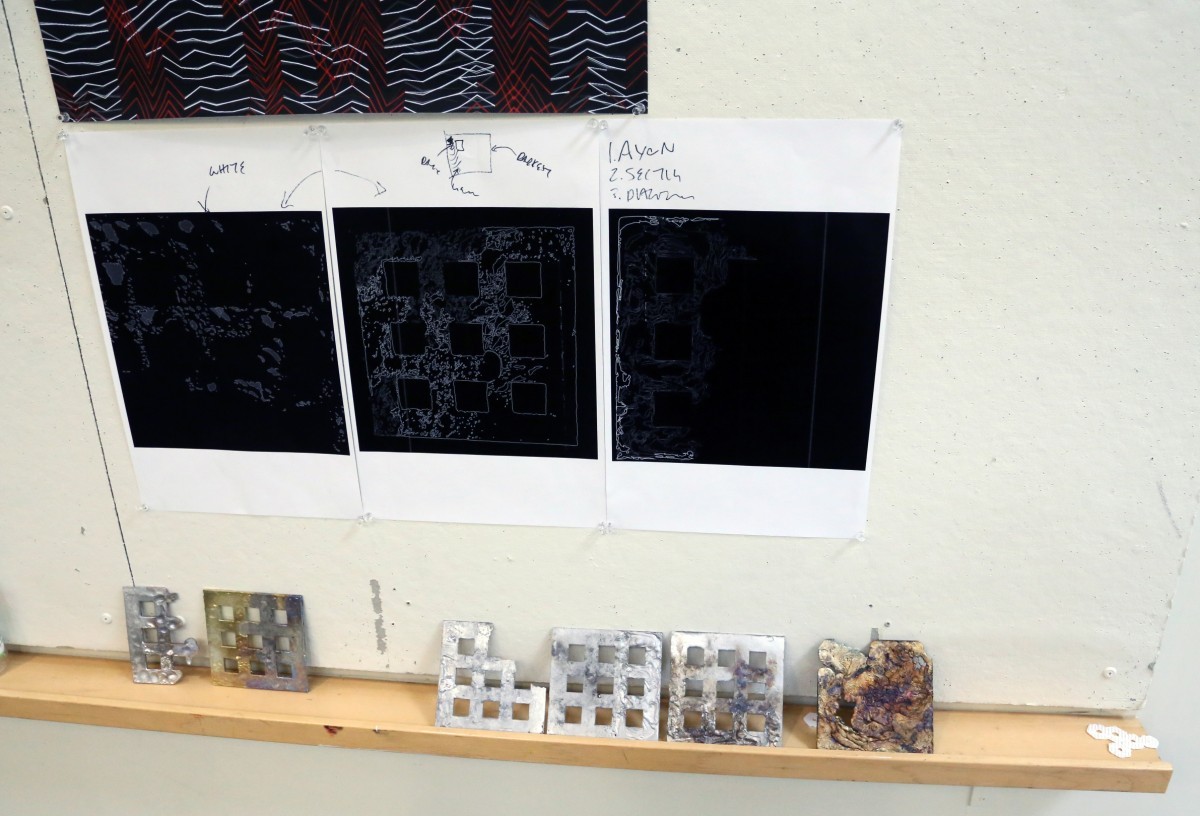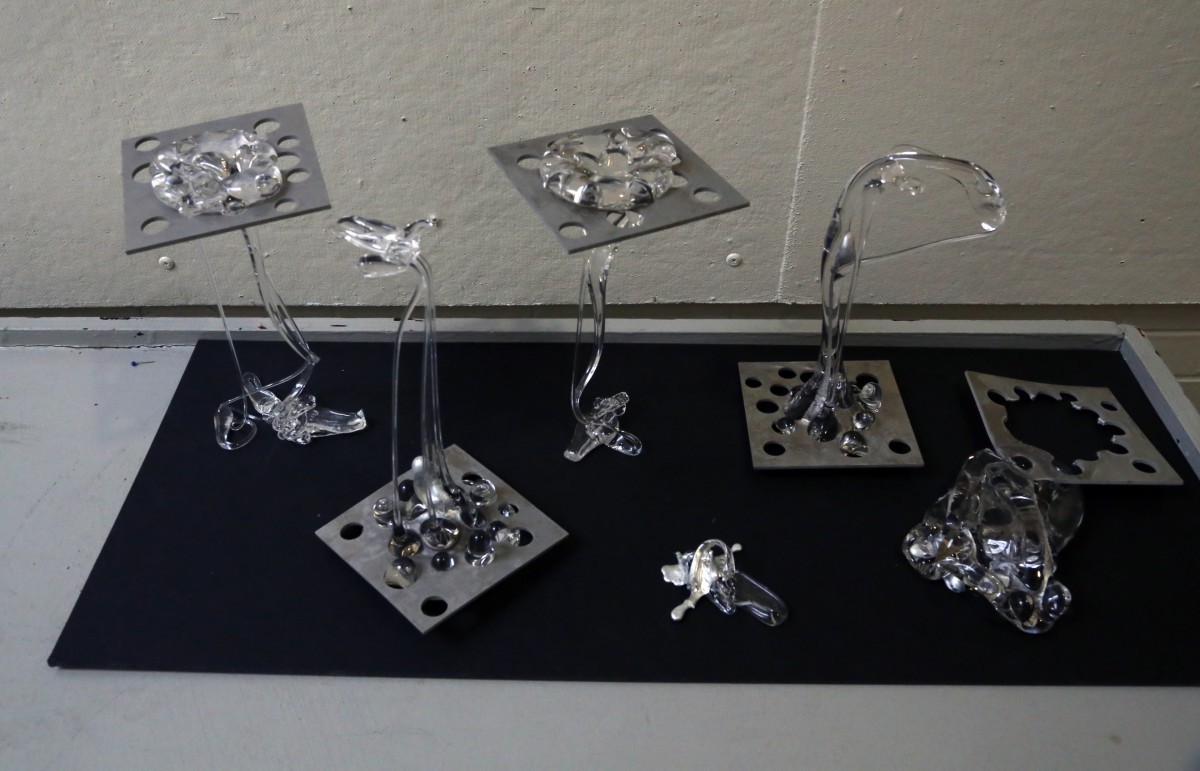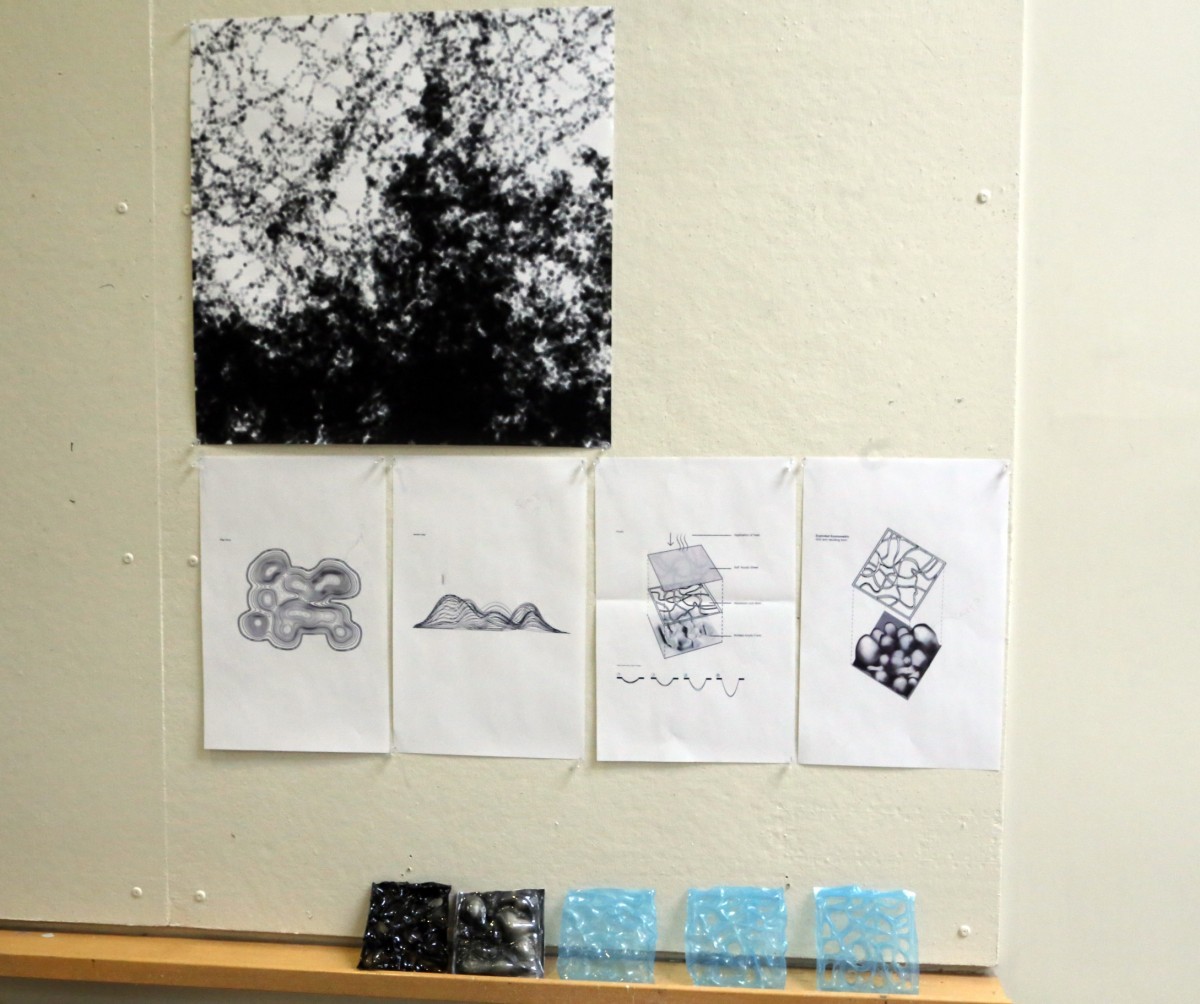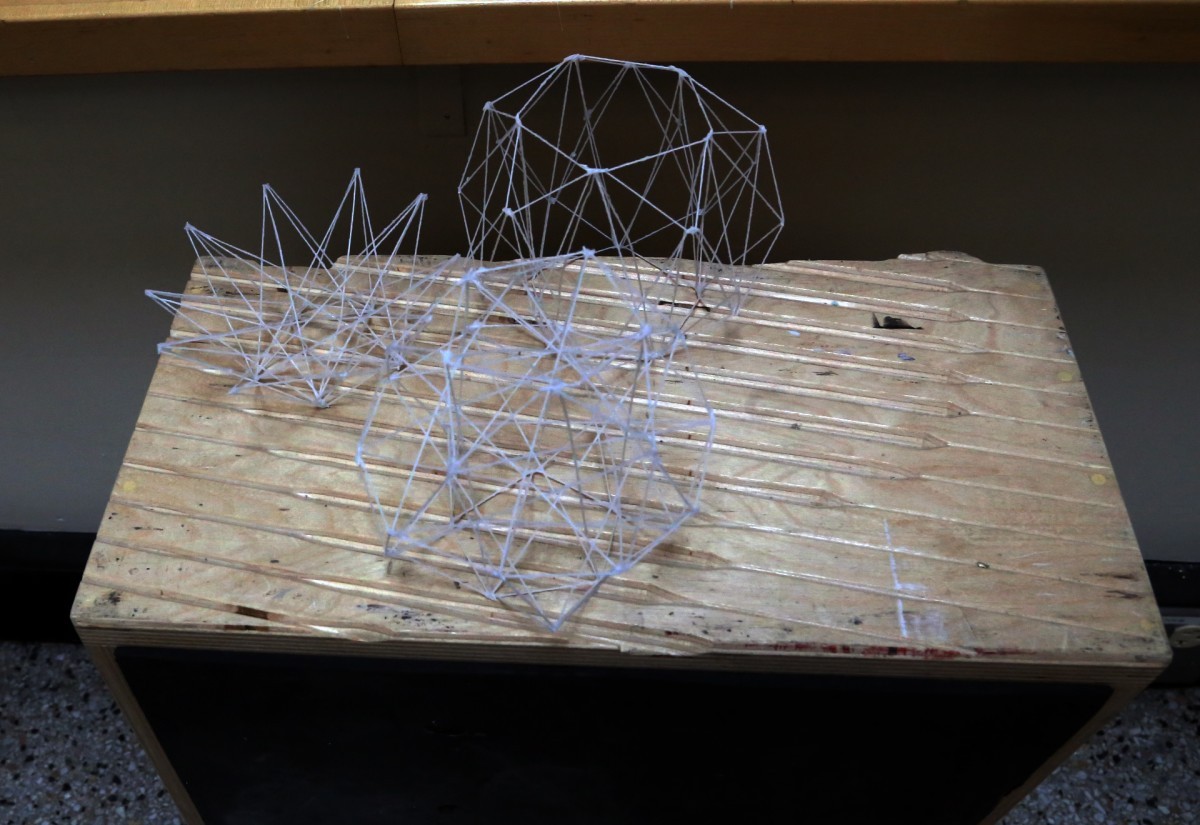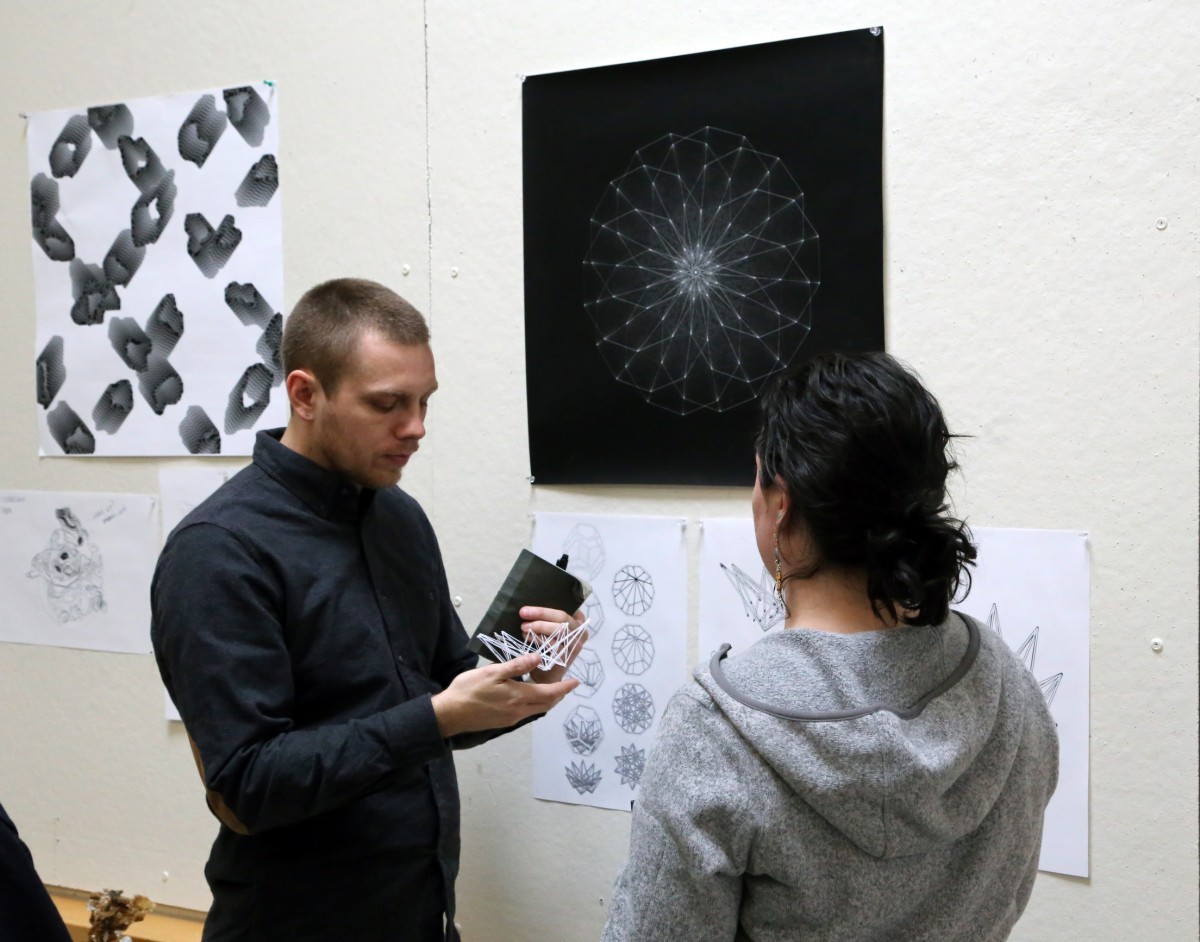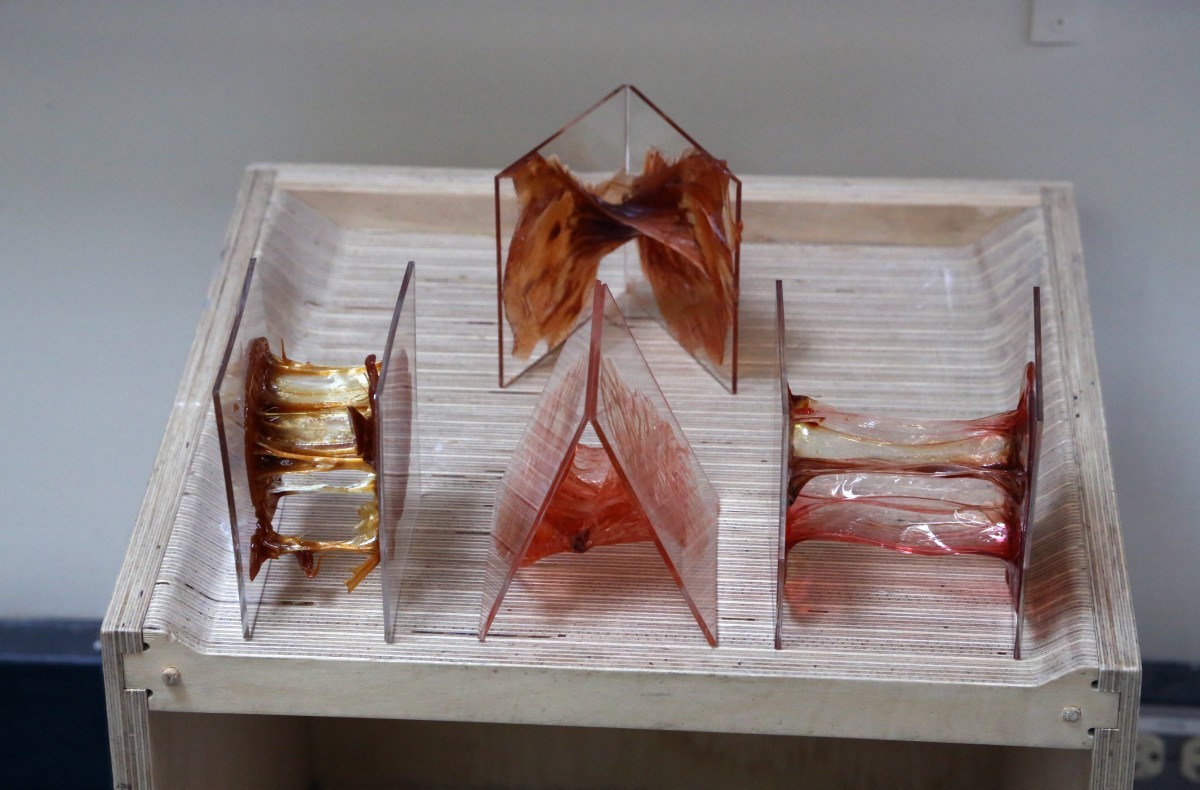Forget the balsa wood and foam core of yesterday’s design classes. Students in Skylar Tibbits’s innovative studio course are using everything from gummy bears to glass to rubber to foam, to create three-dimensional representations of the generative drawings they produced earlier in the semester.
Skylar Tibbits, MIT Research Scientist and Director, Self-Assembly Lab, researches self-assembly and programmable material technologies for novel manufacturing, products and construction processes. His design studio, sponsored by the MIT Center for Art, Science & Technology (CAST), fuses materials science, art and design with this emergent field of self-generating and programmable materials.
In Tibbits’s view, the software revolution and the more recent hardware revolution have blossomed into a materials revolution, wherein we have the capability to program not only machines, but also matter itself. This course takes up that challenge.
For their first assignment, Generative Drawings, students investigated processes of drawing by looking at precedents from the fields of generative art and materials science. Using the assembly language Processing, they created four logic diagrams based upon the structural properties of various material precedents.
Material Formations, the second project, required students to translate their drawings from the previous exercise into a series of material experiments. Students explored a number of material forming processes, including multi-material printing, low-temperature metal casting, glass blowing, plastic/plaster/rubber casting, crystallization, electroplating, foams, bubbles and natural material growth. They selected materials for this project based on a logical relationship to some aspect of the material process depicted in the original generative drawings.
Tibbits says he wanted the students to “push their material to its failure.” As he explains, “Usually you begin with a concept and want to find a material that can achieve that idea. In this case, I wanted to do the opposite and have the students explore what the materials do first, and let that dictate the look of the models.” He points to a foam sculpture with a bulbous protuberance and says, “You couldn’t anticipate that.”
Students will continue to explore these unanticipated characteristics of materials into a third and final project for the class, for which they will work in teams to create large-scale installations based on their discoveries.
This studio has been funded by the MIT Center for Art, Science & Technology (CAST) through the generosity of Ronald A. Kurtz ’54, in recognition of the exemplary career of Merton C. Flemings, Toyota Professor Emeritus and founding director of the Materials Processing Center at MIT

